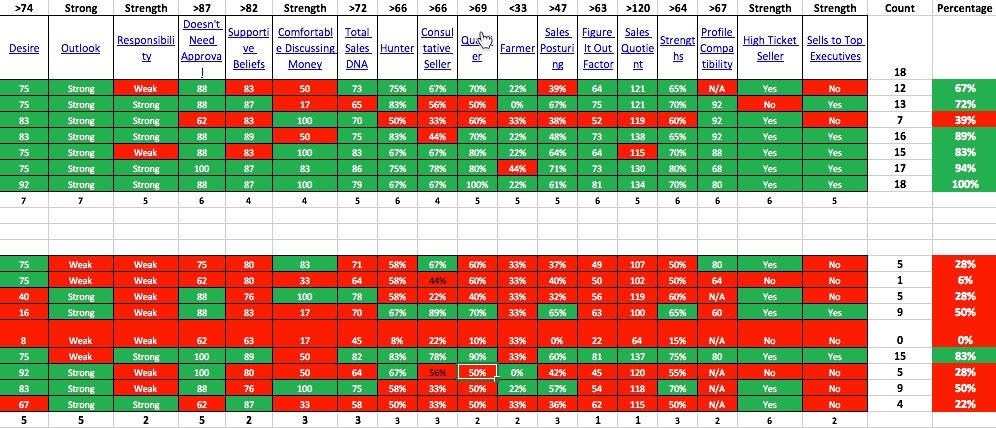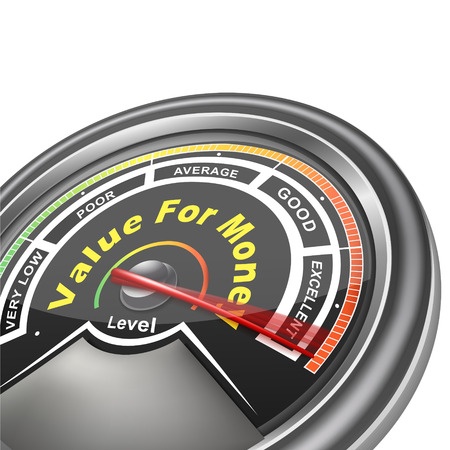social selling
-
What You Should Never Do on LinkedIn to Do Business with Your LinkedIn Network
- May 16, 2018
- Posted by: Dave Kurlan
- Category: Understanding the Sales Force

I don’t know about you but for every benefit I get from LinkedIn, I get an equal amount of frustration. Some people, like me, have criteria for who they will invite and whose invitation they will accept on LinkedIn. How many times has this happened to you?
Someone invites you to join their LinkedIn network or asks if they can join yours. You accept. And then it happens…
-
Data Shows Most Salespeople are Dinosaurs When it Comes to Social Selling
- April 2, 2018
- Posted by: Dave Kurlan
- Category: Understanding the Sales Force

I have data that shows that the very people who don’t score well at hunting (reluctant, ineffective or both) also score poorly at Social Selling while those who score the highest for Hunting score higher for Social Selling too. Check out this data from Objective Management Group’s (OMG) evaluations of more than 1.7 million salespeople:
-
4 Critical Changes to Go from Failure to Success in Sales Today
- July 18, 2016
- Posted by: Dave Kurlan
- Category: Understanding the Sales Force

Today I’m in Florida, preparing to speak at a company’s national meeting. Like many companies, they have not only realized that selling has changed dramatically, but that their salespeople may not have adapted, developed new skills, and changed the way they sell. If you’re a regular reader, active on LinkedIn or Social Media, then you have certainly read about the many ways that selling has changed. But most senior executives haven’t put two and two together yet. They know that win rates are down and sales cycles are longer, they know it’s more difficult than ever before, they see that their salespeople are struggling to meet quotas, but they don’t realize the extent to which things have changed. There are four critical requirements which, together are the difference between success and failure.
-
Surprising New Data on Salespeople Busts the Myths about Relationship Selling and Social Selling
- June 16, 2016
- Posted by: Dave Kurlan
- Category: Understanding the Sales Force

I had a theory about salespeople, but didn’t have the data to prove it out. I believed that social selling was a godsend to those in sales who were not great at relationship building – that by utilizing applications like LinkedIn and Twitter, they could reach out to new people, but with the benefit of hiding behind the glass screen. Do you think I was right? Or wrong?
-
The Science of Sales Selection vs. the Marketing of Modern Selling
- August 14, 2015
- Posted by: Dave Kurlan
- Category: Understanding the Sales Force

I started with more than 100 sales-specific findings and narrowed them down to the 18 findings and scores that clearly differentiated their tops from their bottoms. A mistake made by behavioral scientists and sellers of personality and behavioral styles assessments is that they only look at top performers and identify common traits. They fail to realize that the bottom performers have the same personality traits and behavioral styles as the top performers and none of those traits or styles are predictive of sales performance.
-
Why I Was Kicked Out of a LinkedIn Sales Group
- July 8, 2015
- Posted by: Dave Kurlan
- Category: Understanding the Sales Force

I wrote an article on whether or not LinkedIn was a waste of time and as with the medical newsletters I read, my LinkedIn article resonated with a lot of people. But as with the medical mainstream, not everyone was happy with the article… In just the past week, I have already been blocked in one LinkedIn group and kicked out of another one!
-
Are We Wasting Our Time on LinkedIn?
- June 29, 2015
- Posted by: Dave Kurlan
- Category: Understanding the Sales Force

LinkedIn is a tool that I use more than some and less than others. As busy as I am, I’m unable to spend an hour on LinkedIn each day, but I do visit daily. I am engaged. And I always wonder if it’s a complete waste of time. In this article, I’ll share the highlights and lowlights from my informal LinkedIn effectiveness analysis and you may be very surprised with my conclusion.
-
30 Reasons Why 1 Million Sales Jobs Will be Obsolete
- March 30, 2015
- Posted by: Dave Kurlan
- Category: Understanding the Sales Force

On March 8, this article on the Hubspot Sales Blog reported that one million B2B sales jobs will be lost. Are you, or any of your salespeople at risk? The article talked about four archetypes of salespeople and the two types at greatest risk. While I agree that there won’t be a place for order takers, and those who sell consultatively will always have work, I see the shakeup a bit differently. Here’s why.
-
Selling Value – Everything You Always Wanted to Know
- December 4, 2014
- Posted by: Dave Kurlan
- Category: Understanding the Sales Force

So if not those topics, then what should we all be writing about – all the time – that would be a real difference maker for salespeople?
I believe that it’s the importance of and ability to sell value. Why, you ask?
-
Surprising Social Selling Secret Drives Sales Revenue
- November 5, 2014
- Posted by: Dave Kurlan
- Category: Understanding the Sales Force

If you’ve been reading my Blog, then you are probably aware of OMG’s big Sales Force Effectiveness Study that we’ve been working on for the past three months. One of the things we studied is the impact of Social Selling. At face value, one might come to the exact same conclusion as we did in 2013, that it’s having limited impact on sales. However, this time we looked wider and deeper and beyond the obvious and we were extremely surprised by what we found. We discovered that
- 1
- 2

